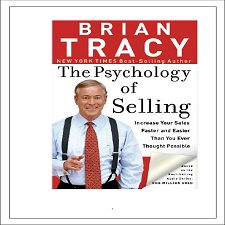توضیحات
ABSTRACT
Emotional intelligence (EI), defined as a set of abilities for perceiving, using, understanding, and managing emotions, has been associated with a better psychosocial adjustment. Empirical studies have found a positive relationship of EI with social function and a negative one with conflicts in social relationships. The purpose of this study was to systematically review available evidence on the relationship between EI and aggression.
PubMed, PsycINFO and Scopus were searched for relevant articles in English and Spanish, and 19 eligible studies were identified. Together, these studies provide strong evidence that emotional abilities and aggressive behavior are negatively related: people with higher EI show less aggression. This relationship appears to be consistent across ages (from childhood to adulthood), cultures, types of aggression, and EI measures. Few studies have assessed EI using ability tests, and none of the eligible studies was longitudinal or experimental. These findings are discussed in relation to future research on aggression and strategies to prevent and manage it based on EI.
INTRODUCTION
According to the World Health Organization (2002), each year more than 1.6 million people around the world die as a result of violent behavior. In fact, violent behavior is one of the major causes of death for people aged 15–44. The prevalence and frequency of violent behavior around the world are far greater if we take into account violence that does not lead to death. Human aggression is defined as any behavior directed toward another individual that is carried out with the proximate (immediate) intent to cause harm. In addition, the perpetrator must believe that the behavior will harm the target, and that the target is motivated to avoid the behavior (Anderson & Bushman, 2002). Aggressive behavior produces negative effects not only in the victims, but also in the aggressors. More aggressive adolescents show
clear psychosocial maladjustment, low academic performance, absenteeism from school, involvement in delinquent acts, substance abuse, and various mental health problems, including higher levels of depression (Moffitt, 2006; Ostrov & Godleski, 2009; Piquero, Daigle, Gibson, Piquero, & Tibbetts, 2007).
چکیده
هوش هیجانی (EI)، به عنوان مجموعه ای از توانایی ها برای درک، استفاده، درک و مدیریت احساسات تعریف شده است، با تعدیل روانی و اجتماعی بهتر مرتبط است. مطالعات تجربی ارتباط مثبت EI با عملکرد اجتماعی و یک منفی با درگیری در روابط اجتماعی پیدا کرده است. هدف از این مطالعه، به طور سیستماتیک بررسی شواهد موجود در ارتباط بین EI و پرخاشگری بود. PubMed، PsycINFO و Scopus برای مقالات مربوط به انگلیسی و اسپانیایی مورد جستجو قرار گرفتند و 19 مطالعات واجد شرایط شناسایی شدند. با هم، این مطالعات شواهد قوی نشان می دهد که توانایی های عاطفی و رفتار تهاجمی منفی مرتبط است: افرادی که EI بالاتری دارند، تجاوز کمتر را نشان می دهند. این رابطه به نظر می رسد در سراسر سنین (از دوران کودکی تا بزرگسالی)، فرهنگ ها، انواع تجاوز، و اندازه گیری EI است. تعداد کمی از مطالعات EI با استفاده از آزمون توانایی ارزیابی شده است و هیچکدام از مطالعات واجد شرایط طولی یا تجربی نیستند. این یافته ها در رابطه با تحقیقات آینده در مورد تجاوز و استراتژی های پیشگیری و مدیریت آن بر اساس EI مورد بحث قرار گرفته است.
مقدمه
به گفته سازمان بهداشت جهانی (2002)، هر ساله بیش از 1.6 میلیون نفر در سراسر جهان در نتیجه رفتار خشونت آمیز جان می گیرند. در واقع، رفتار خشونت آمیز یکی از علل اصلی مرگ و میر در بین افراد 15-44 ساله است. شيوع و فراواني رفتار خشونت آميز در سراسر جهان بسيار بيشتر است اگر به خشونت توجه شود که به مرگ منجر نمي شود. تجاوز انسان به عنوان یک رفتار رفتار شده به سوی فرد دیگری تعریف می شود که با قصد نزدیک به (هدف) برای ایجاد صدمه انجام می شود. علاوه بر این، مرتکب باید باور داشته باشد که رفتار به هدف منجر خواهد شد و هدف از انگیزه برای جلوگیری از رفتار (Anderson & Bushman، 2002) است. رفتار تهاجمی منجر به اثرات منفی نه تنها در قربانیان، بلکه در متجاوزان نیز می شود. نوجوانان تهاجمی بیشتر نشان می دهند عدم تعادل روانی اجتماعی، عملکرد تحصیلی کم، غیبت از مدرسه، مشارکت در اقدامات بزهکار، سوء مصرف مواد و مشکلات بهداشت روانی مختلف، از جمله سطح بالاتری از افسردگی (Moffitt، 2006؛ Ostrov & Godleski، 2009؛ Piquero، Daigle، Gibson، Piquero، & Tibbetts، 2007)
Year: 2014
Publisher : ELSEVIER
By : E. García-Sancho , J.M. Salguero , P. Fernández-Berrocal
File Information: English Language/ 8 Page / size: 269 KB
Only site members can download free of charge after registering and adding to the cart
سال : 1393
ناشر : ELSEVIER
کاری از : E. García-Sancho , J.M. Salguero , P. Fernández-Berrocal
اطلاعات فایل : زبان انگلیسی / 8 صفحه / حجم : KB 269


![Relationship between emotional intelligence and aggression[taliem.ir]](https://taliem.ir/wp-content/uploads/Relationship-between-emotional-intelligence-and-aggressiontaliem.ir_.jpg)

![Internet-based CBT for social phobia and panic disorder in a specialised[taliem.ir]](https://taliem.ir/wp-content/uploads/Internet-based-CBT-for-social-phobia-and-panic-disorder-in-a-specialisedtaliem.ir_.jpg)

![Lying and team incentives[taliem.ir]](https://taliem.ir/wp-content/uploads/Lying-and-team-incentivestaliem.ir_.jpg)
![Undergraduate music students depression, anxiety and stress levelsa study from Turkey[taliem.ir]](https://taliem.ir/wp-content/uploads/Undergraduate-music-students-depression-anxiety-and-stress-levelsa-study-from-Turkeytaliem.ir_-150x150.jpg)
![The effects of maternal smoking during pregnancy on offspring outcomes[taliem.ir]](https://taliem.ir/wp-content/uploads/The-effects-of-maternal-smoking-during-pregnancy-on-offspring-outcomestaliem.ir_-150x150.jpg)
نقد و بررسیها
هنوز بررسیای ثبت نشده است.